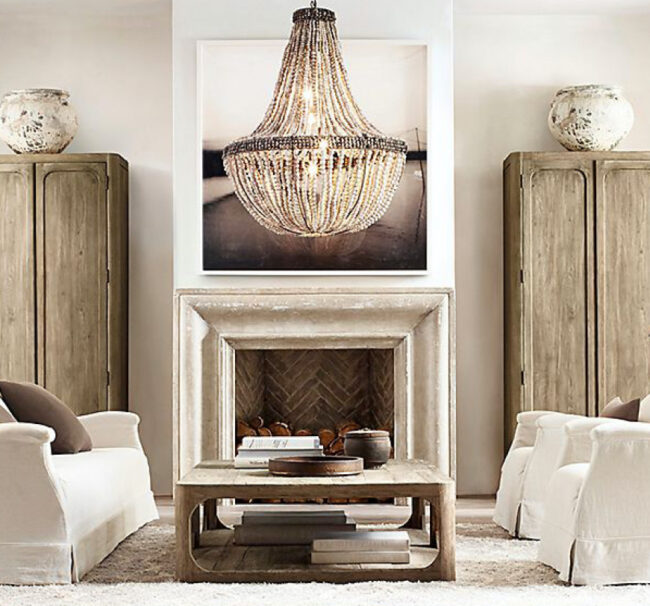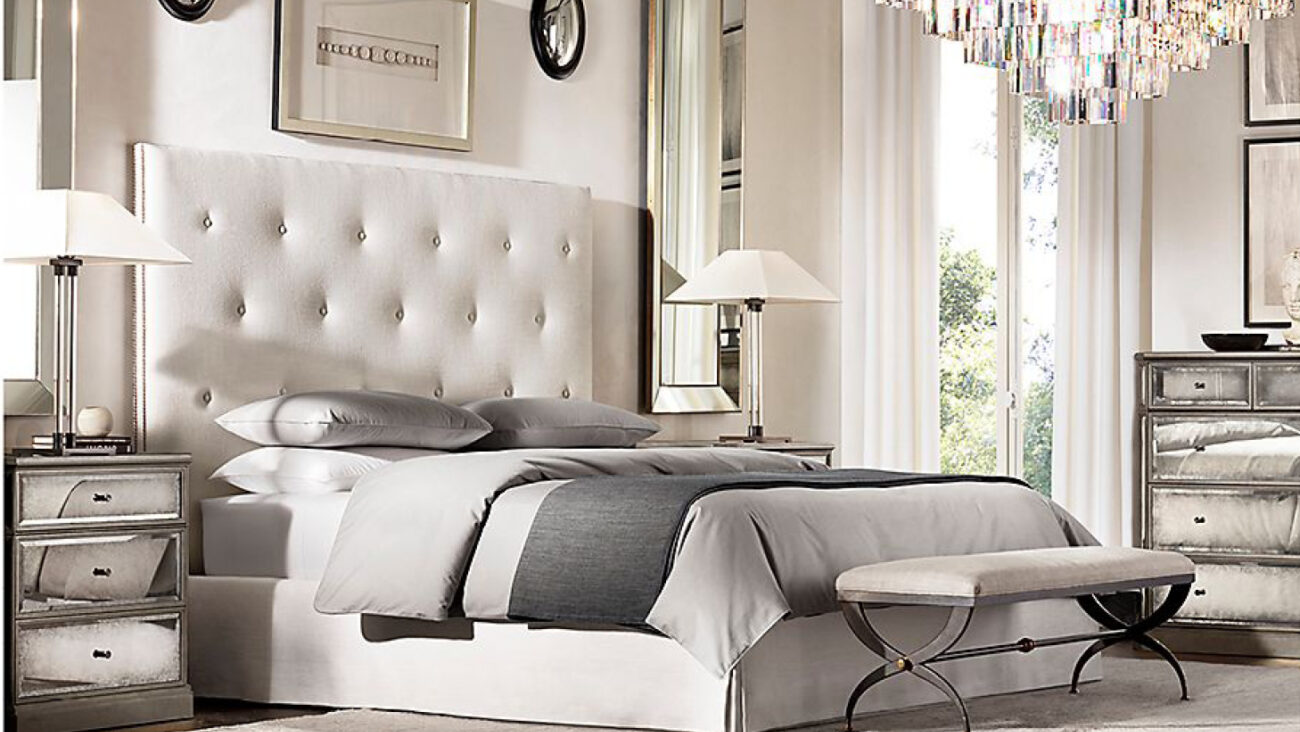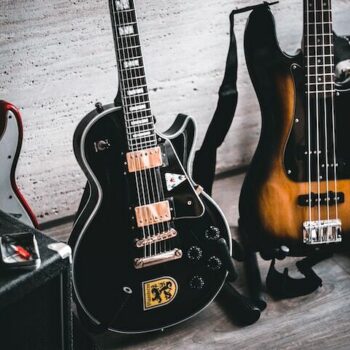A Case Study on Restoration Hardware’s Fearless Commitment to the Luxury Lifestyle Brand
Earlier this decade, as the U.S. economy struggled to recover from the Great Recession, luxury home-furnishings retailer Restoration Hardware took a gamble. Led by visionary CEO Gary Friedman, Restoration Hardware bucked the trends of the retail market and doubled down on becoming a true luxury lifestyle brand.
In Friedman’s vision, it would be a fully interactive brand that unapologetically catered to the upper class (and those with upper-class credit limits). The consumer experience would be so powerful that consumers would gladly open their wallets for RH’s custom artisanal furnishings. There would be upscale brick-and-mortar stores—really big ones, called galleries, all over the country—to go along with 2,000-plus-page source books and a comprehensive website. And there would be a diversified product line, with such niche categories as RH Modern, RH Baby & Child, and RH Contemporary Art.
“We are in the very early stages of a retail renaissance and believe we can curate a world and a business that goes far beyond the four walls of the home,” Friedman said in 2013, as reported by Nasdaq.
Today, Restoration Hardware proudly describes itself as “a curator of the finest historical design the world has to offer … culled from our partnerships with the world’s most renowned artisans.” It is the kind of place where you’ll find period-accurate 19th-century Chesterfield sofas for $5,000, as well as $12,000 hand-knotted Zahira Moroccan rugs. It is luxury at luxury prices, just as Friedman had envisioned.
Judging by the numbers, RH’s gamble on luxury seems to have paid off big-time. According to the Wall Street Journal, from 2010 through 2014, RH’s net revenue grew by 20 percent each year. In 2014, RH’s net revenue reached $1.8 billion. And market experts predict that revenue will soar to over $2.15 billion for 2015, with even higher estimates for 2016.
Expand the Brand
With new multistory galleries recently opening in Atlanta and Boston—and plenty more in the works, including a 60,000-square-foot gallery on San Francisco’s historic Pier 70—Restoration Hardware appears to be ready for even more explosive growth. And while it continues to push the boundaries of its brand, RH is also revitalizing a once-great retail channel: the store as a “destination.”
For example, RH’s Boston gallery occupies the historic 40,000-square-foot Beaux-Arts building, which was constructed in 1862 as the New England Museum of Natural History. Each of its four floors is dripping with history, opulence, and grandeur. There are meticulously staged dining rooms, living rooms, and bedrooms. There are also a wine bar, a beer pub, a conservatory, a library, and a painstakingly accurate re-creation of a late-19th-century glass elevator. No expense has been spared, no detail overlooked. It is the Restoration Hardware luxury lifestyle on display—a truly immersive shopping experience.
“There’s the thought that everything is moving online, that retail stores are dying and people should shrink or close their stores. I actually think that’s not true. I think we’re going through natural evolution and shift with a new channel and platform,” Friedman said in a 2014 interview with Racked. “We’re going to create the next generation [of retail experience]—a place that is reflective and harmonious, with cafés and fountains and rooftops. It will be transformative to how people will shop because it’ll be a place you’ll love.”
Laying the Foundation
But back in 2009, the retail landscape looked much different, and Restoration Hardware didn’t have quite as strong a wind at its back. The floundering economy was hurting retailers, especially home-furnishings retailers. Conventional market wisdom suggested that consumers were going to be cutting back on luxury items. The deck appeared to be stacked against Friedman and Restoration Hardware.
According to Nasdaq, Restoration Hardware narrowly escaped bankruptcy in 2008 (thanks in large part to Friedman’s taking the company private in a leveraged buyout), but it was losing money. And in the wake of its brush with bankruptcy, the company had to close many of its underperforming stores. Restoration Hardware survived, but it would not be profitable again until 2012.
But even in this bleak market, Friedman saw an opportunity. “While everyone is focused on making their goods cheaper, we are focused on making them more unique and more aspirational. Our approach is if you really find something that’s best on the planet that people covet, they will buy it,” Friedman said in a 2009 interview with the Washington Post. “In an economy like this, people cut the frivolous and low-quality items from their lives. We think we are on to something, and the rest of the world is going the opposite way.”
And that was the real turning point for Restoration Hardware. The foundation was laid for a strong luxury lifestyle brand, one that could stand out from the crowd and make an authentic connection with its target consumers. As competitors such as Pottery Barn and Williams-Sonoma took a reactionary approach to the recession and began overhauling their product lines and marketing tactics to cater to the discount-minded shopper, Restoration Hardware stayed the course. It remained committed to the luxury lifestyle brand.
As RH’s profits started to soar in 2012 and 2013, market experts began lauding the company’s bold commitment to luxury in the face of strong economic headwinds. “Restoration Hardware’s focus [on luxury] is the secret of how they’ve been able to pull themselves off the brink of disappearing and back into growth mode,” Pam Danziger, a retail analyst at Unity Marketing, said in a 2014 article on Racked. “They’ve really found a real niche in hitting the popular conception of how more affluent Americans want to decorate their homes. They understand people who are house-proud.”
High Risk, High Reward
It’s no secret that for a brand to achieve long-term success, it must evolve—and sometimes even reinvent itself. A brand must continue to make an impact on consumers for it to remain relevant. This especially holds true for lifestyle brands such as Restoration Hardware.
In RH’s case, committing to a luxury lifestyle brand was a strategic decision. It allowed the company to control the setting and context in which its products appeared. But more importantly, it allowed RH to distinguish itself from the competition. This was vital for a company trying to sell items at price points that were well above the competition’s.
And there are certainly other risks with going all in on the luxury lifestyle brand. The brand must hit the mark with its target demographic. If it misses that connection, the brand risks becoming irrelevant—just overpriced items and expensive ads.
So a luxury lifestyle brand must be willing to be bold, willing to buck the trends in order to carve out that special connection with the consumer. But as Friedman and Restoration Hardware have proven, the rewards are well worth the risk.
“The heart is said to be 10,000 times more powerful than the mind,” Friedman said in a recent earnings report video. “You can’t give yourself goose bumps, because it needs to come from the heart. We need to connect to something we deeply believe in to become emotional, to get goose bumps, butterflies, or tears. It has to be authentic.”
Authentic, bold, committed. Restoration Hardware has given us a valuable blueprint for a successful luxury lifestyle brand.
We highlighted RH’s dynamic approach in a previous blog post that you also might like.
Photos: Shutterstock






